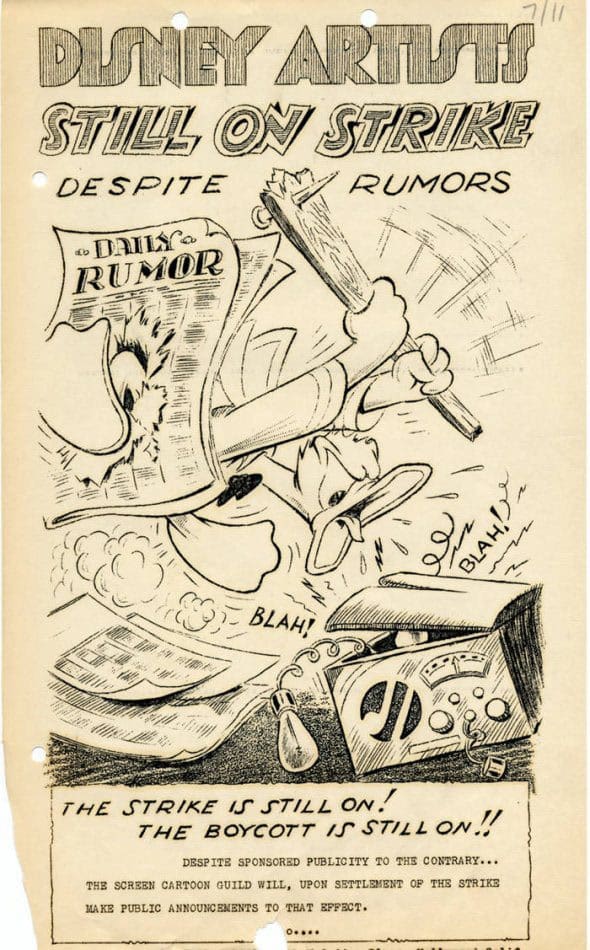- Discussion
- Homework 5A
Homework 5A
You must be logged in to reply to this topic.
-
AuthorPosts
-
-
March 5, 2019 at 8:05 pm #484

PatrickParticipantI was unaware of how animation companies split their parent company into two, in order to benefit when dispersing wages to their employees. I learned that an animation company based in Los Angeles must pay their employees the rate agreed upon by the union but those non-unionized employees who are located in another state such as New York, can be paid much less for their work. I was surprised to learn that animators who were working on a major project from Disney were compensated only $400 per week for their work. Titmouse, an animation company, justified their employee salary range by the level of experience per employee. They also promoted their hiring of interns; suggesting that the wages are not that high for that level of employee. I agree with giving non seasoned employees a chance to get their career started but $700 per week difference in wages does not seem fair.
-
March 11, 2019 at 12:48 am #490

Portia AndersonParticipantI absolutely loved and appreciated the articles! It really gave me insight on what to expect when going into the animation industry. I also loved the feedback from both sides of the comment section! I honestly learned more in the comment section ranging from beginner animators to veteran animators about the pros and cons when working in the industry as a freelancer or at a studio with and without a union. I found it interesting how many people could be for and against a union that helps people receive better wages and health benefits. One commentator claimed the Animation Guild offers an expensive health care plan that strong arms smaller studios to pay for coverage for their employers. Other commenters like the artists at the Rick And Morty studio defended the co-creator even after he posted disgusting comments seemingly going against health care for his artists. I had no idea animation could get so political and the fact that animators make less than 10$ an hour which is what the dish washers at my job get paid is saddening. This is a profession Iv dreamed about since I was a little girl and now to think all the great animated movies and shorts I looked up to could have been worked by someone not making enough to survive is upsetting and has to change. I always assumed popularized animated shows on major networks all had unions and paid fair wages because how much money a-lot of these movies make (example: Frozen which made 1.276 billion dollars). It was interesting to think I could possibly work in L.A making a decent living and doing what I love but I also would still consider working in NYC hoping wages get better and bridging the gap between both cities.
Interesting vocab and information I also took away from these articles; union shop, Cadillac health plan, show runners, animation farms, tax cheats, HR/ producer, EP/ Head writers, Line producers, union/ non-unions, clean up artists, outsourcing, Animation Guild.
Here are some comments I found very interesting!
Commenter: I’ve been in the union for over 30 years and when I was young I shared many of Roiland’s views about my own union. In ’82 our union president Bud Hester did force us out on a strike we couldn’t win trying to stop outsourcing, and I resented him greatly for it. On the other hand, I’ve worked at non union studios, and as annoying, strategically stupid, and occasionally unprofessional as our union has sometimes been in the past, they’ve always tried to operate on behalf of their members. I cannot say that about most of the studios where I’ve worked. Government workers have more protection against unscrupulous management than corporate employees. Roiland just sounds like a whiner who tried to pull a fast one and got caught. A number of his statements are demonstrably untrue, and the shell company ruse is about as old, shady and unprofessional as business gets. Honestly, I’ve never met a studio head who gave a damn about his artists needs, not even the guy who trained me and who I served with unreasoning loyalty for a decade. What looks like affection is just pride of ownership. They care more about their pets.
Commenter: My guess is they weren’t paying OT, hence unhappy workers and the calculations above^^^. If they were working a ton of OT with no additional pay, they were working long hours and making less than a plumber. In fact, even at $40 an hour they were making less than a lot of plumbers. Now, I can see being irritated as the show’s creator if you were blindsided and threatened with a strike out of the blue, but it doesn’t sound like that was the case. (But like I said, I don’t actually know any details aside from what I read above.) The other thing non-animator types need to understand about the industry- Yes, $40 an hour is a pretty decent wage if you are fully employed year round, but many productions lay you off the second the work is done (sometimes even before and you freelance to the end!) and it’s not always easy to precisely calculate when you’ll be available for more work. You may work only six months at a time (never qualifying for health care) and have long gaps between jobs. It can be an unpredictable business, not always easy for workers or management.
Commenter: One big problem in the animation business is that frequently the artists are only employed for short periods of time, so they either never qualify or lose their health coverage on a regular basis. The stable health coverage (and retirement benefits) are pretty important to the artists.
On a happier note, a quote from the article. As the famous jazz pianist Hampton Hawes once wrote, “I’ve tried not to low-rate my market price because once your meat is down, they’ll always try to buy it cheaper. I said, I know what I’m worth, but I don’t know how much I can get. Just don’t embarrass me.”
-
This reply was modified 6 years, 1 month ago by
 Portia Anderson.
Portia Anderson.
-
This reply was modified 6 years, 1 month ago by
-
March 12, 2019 at 4:47 pm #493

Anderson EvansParticipantIt is easy to get angry at figureheads like Roiland and Harmon… but this certainly isn’t exclusive to the animation industry. That said, animation is such a great microcosm for analysis of these kinds of issues. Walt Disney, when in his early 20s, came up with an incredibly successful cartoon character called Oswald the Lucky Rabbit. This character would have been Mickey Mouse if Disney hadn’t been replaced by the studio for a cheaper animator and the rights held onto by the studio that produced it. Disney was hardened that day, and began his own studio where he would treat his workers better. And at first he did. He created a studio, paid his employees well, as he was successful he invested all kinds of money into schooling and facilities… but then as the studio grew and grew, now there were new workers and the more veteran workers were allowed to use all these fancy facilities, were paid very well, but incoming workers were paid very little. But at this point Disney was blind to any unfairness he was facilitating because he was comparing his new workers with himself. He was not treating them AS unfairly as HE had been treated, and expected impossible levels of aptitude for people to raise their station. As a result Disney employees finally went on strike, Disney’s greatest animator was all but blacklisted from working again until the 90s (See The Thief and The Cobbler), and Disney upped his marketing of “Disney as Uncle Walt the world’s father figure” while fighting unionization and black listing people and securing copyright to a really disappointing degree. Nobody is perfect, but so interesting to follow the trajectory of figures like Disney from a corporate/capitalist perspective.
“You Either Die A Hero, Or You Live Long Enough To See Yourself Become The Villain” – Harvey Dent
- SEE VIDEO ABOUT DISNEY STRIKE OF ’41 https://www.youtube.com/watch?v=sSjX7S35mn0

-
This reply was modified 6 years, 1 month ago by
 Anderson Evans.
Anderson Evans.
-
This reply was modified 6 years, 1 month ago by
 Anderson Evans.
Anderson Evans.
-
March 14, 2019 at 1:47 pm #500

PatrickParticipantPrior to reading the articles, I was not aware that specific animation companies created loop holes to essentially under pay employees. I found it interesting that the company would use the excuse of giving opportunity, as justifying the low wages compared to their LA counterparts.
-
-
AuthorPosts
You must be logged in to reply to this topic.